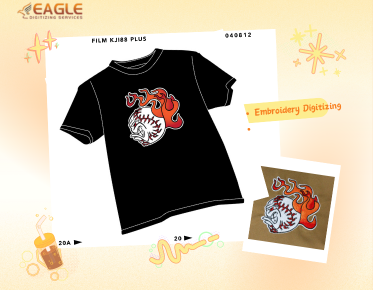Choosing the Right Stitch Types: Matching Needle Density to Fabric Material
Embroidery is an art that combines creativity with technical precision. One of the critical aspects of achieving high-quality embroidery is selecting the right stitch types and matching needle density to the fabric material. This process not only enhances the visual appeal of the embroidery but also ensures durability and longevity. In this comprehensive guide, we will explore the intricacies of choosing the right stitch types and how to effectively match needle density to various fabric materials.
Understanding Stitch Types
Stitch types are the building blocks of embroidery. They determine the texture, appearance, and strength of the embroidered design. Common stitch types include satin stitches, fill stitches, and running stitches. Each type serves a specific purpose and is suitable for different parts of a design. For instance, satin stitches are ideal for creating smooth, raised surfaces, while fill stitches are used for covering larger areas with a textured look.
Satin Stitches
Satin stitches are often used for lettering and outlines. They provide a glossy finish and are perfect for creating bold, eye-catching designs. However, they require careful consideration of needle density to prevent puckering or distortion, especially on delicate fabrics.
Fill Stitches
Fill stitches, also known as tatami stitches, are used to cover large areas. They offer a textured appearance and are suitable for backgrounds or solid shapes. The density of fill stitches must be adjusted based on the fabric's weight and texture to avoid stiffness or thread breakage.
Running Stitches
Running stitches are simple, straight stitches used for outlining or detailing. They are less dense and require fewer threads, making them ideal for lightweight fabrics. Proper tension and spacing are crucial to maintain the design's integrity.
Matching Needle Density to Fabric Material
The choice of needle density is pivotal in embroidery. It refers to the number of stitches per inch and must be adjusted according to the fabric type. Different fabrics have varying levels of stretch, thickness, and weave, all of which influence the ideal needle density.
Lightweight Fabrics
For lightweight fabrics such as silk or chiffon, a lower needle density is recommended. This prevents the fabric from being overwhelmed by the stitches, which can lead to puckering or distortion. Using a fine needle and light thread can also help maintain the fabric's delicate nature.
Medium-Weight Fabrics
Medium-weight fabrics like cotton or linen can handle a moderate needle density. These fabrics provide a stable base for embroidery, allowing for more intricate designs without compromising the fabric's integrity. Adjusting the tension and using appropriate backing can further enhance the results.
Heavyweight Fabrics
Heavyweight fabrics such as denim or canvas require a higher needle density. These robust materials can support dense stitching, making them ideal for detailed and durable designs. However, it's essential to use a strong needle and thread to prevent breakage during the embroidery process.
The Role of Embroidery Digitizing
Embroidery digitizing plays a crucial role in the embroidery process. It involves converting artwork into a digital format that embroidery machines can read. This process ensures precision and consistency in stitch placement, which is vital for achieving high-quality results. Companies like Eagle Digitizing specialize in providing embroidery digitizing services that cater to various client needs, ensuring that designs are executed flawlessly.
Eagle Digitizing offers a range of services, including 3D Puff Digitizing and Left Chest Digitizing, which are tailored to meet specific design requirements. Their expertise in the field allows them to deliver efficient product sew-outs, minimizing thread breakage and ensuring smooth operation on embroidery machines【4:0†source】.
Practical Tips for Embroidery Success
To achieve the best results in embroidery, consider the following tips:
- Always test your design on a fabric swatch before proceeding with the final piece. This helps identify any potential issues with stitch density or fabric compatibility.
- Use high-quality threads and needles to ensure durability and a professional finish.
- Adjust the tension settings on your embroidery machine according to the fabric type and stitch density.
- Consider using a stabilizer or backing to provide additional support to the fabric during embroidery.
Exploring Future Trends in Embroidery
As technology continues to advance, the embroidery industry is poised for exciting developments. Innovations in embroidery digitizing software and machine capabilities are expected to enhance precision and expand creative possibilities. Additionally, the growing demand for personalized and custom designs is likely to drive further advancements in embroidery techniques and materials.
Whether you're a seasoned embroiderer or a beginner, understanding the relationship between stitch types, needle density, and fabric material is essential for creating beautiful and lasting embroidery. By leveraging the expertise of services like Eagle Digitizing, you can ensure that your designs are not only visually stunning but also technically sound【4:1†source】.



